Who’s heard of a Feed Sack Quilt? In the early 20th century, when companies packaged many dry goods in cloth sacks, innovative sewists upcycled these utilitarian items into quilts, clothes, and toys for their families.
This year, the International Quilt Museum featured an extensive exhibit of feed sacks and the items created from them. I knew a bit about feed sacks and their use, but after seeing this beautifully curated exhibit, I have an entirely new level of respect for these textiles.
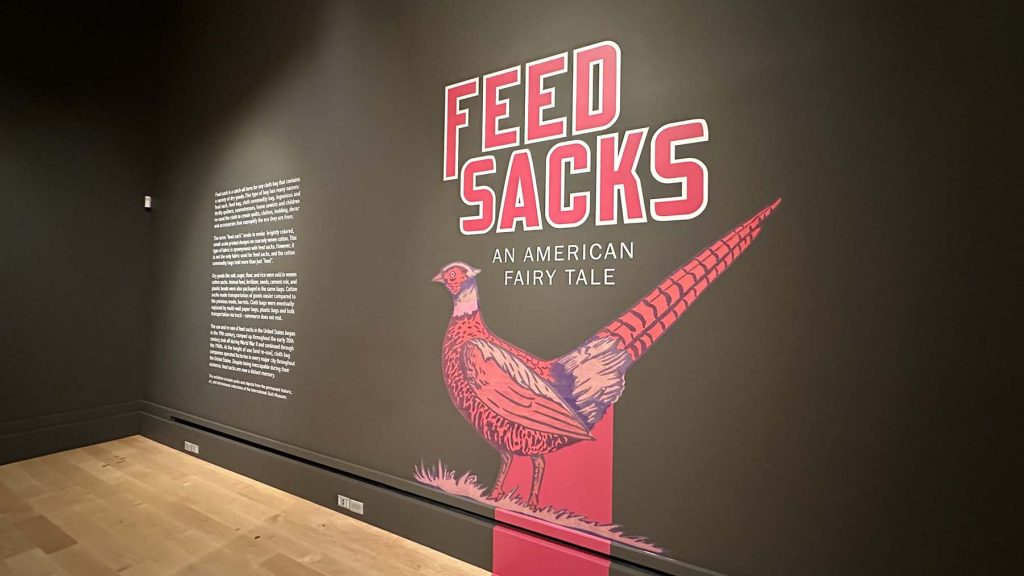
The International Quilt Museum
The International Quilt Museum is in Lincoln, Nebraska, and houses an extensive permanent collection of quilts and related textiles. The museum hosts multiple exhibits in its extensive gallery spaces, including items in the permanent collection and pieces on loan.

Feed Sack Exhibit
Many of you know my background as a theatrical scenic and costume designer, and I appreciate a well-laid-out exhibit. A red line on the floor draws visitors into the back gallery, where the Feed Sack Exhibit is located. The entire space allows people to move around with direction and easily return to previous pieces.
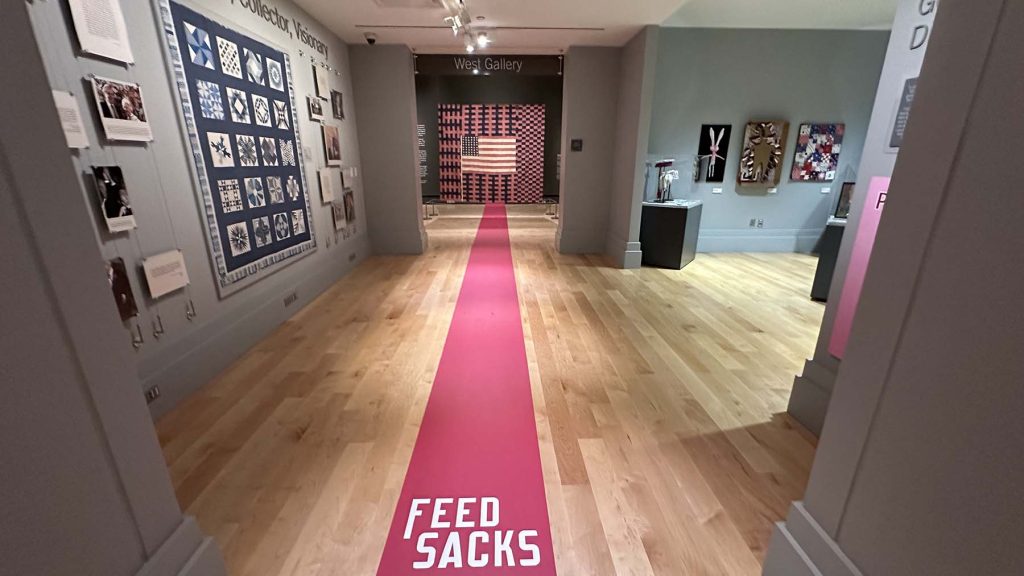
Feed Sacks
For me, the critical part of the exhibit was the timeline featuring feed sack examples from 1925 to 1965. It is fascinating to see how strictly utilitarian labeling evolved to feature attractive prints as companies realized their packaging took on a new life once it entered a household. Eventually, companies even started printing their labels so the consumer could easily remove them, leaving the sewist with a large, clean, usable section of fabric.
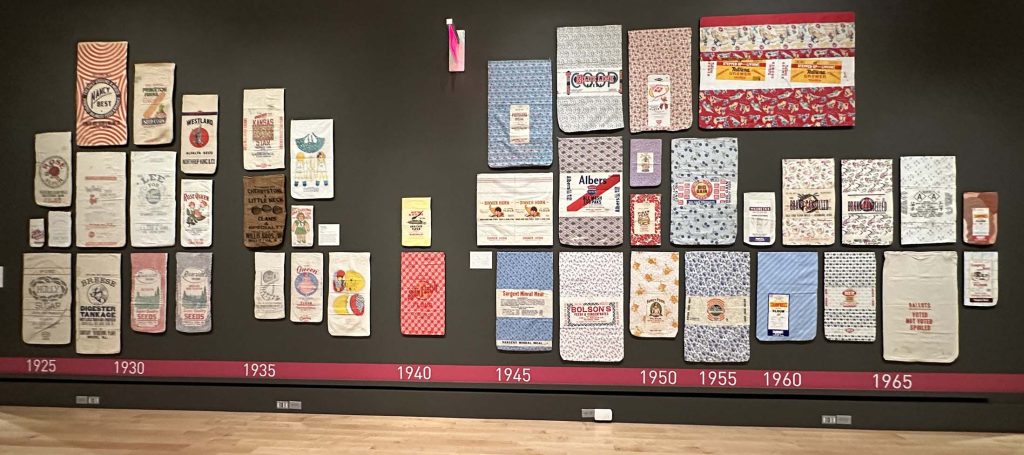
Brands even partnered up to offer popular characters on feed sacks. How fun is it to imagine kids getting their favorite characters on their clothes, quilts, or toys and their parents not having to pay specifically for the fabric?

Some bags even featured designs to create stuffed toys!
Feed Sack Quilts
I expected an extensive selection of feed sack quilts and wasn’t disappointed. Several groupings of quilts were situated around the space, and seeing them near each other highlighted the range of designs achievable using similar materials.
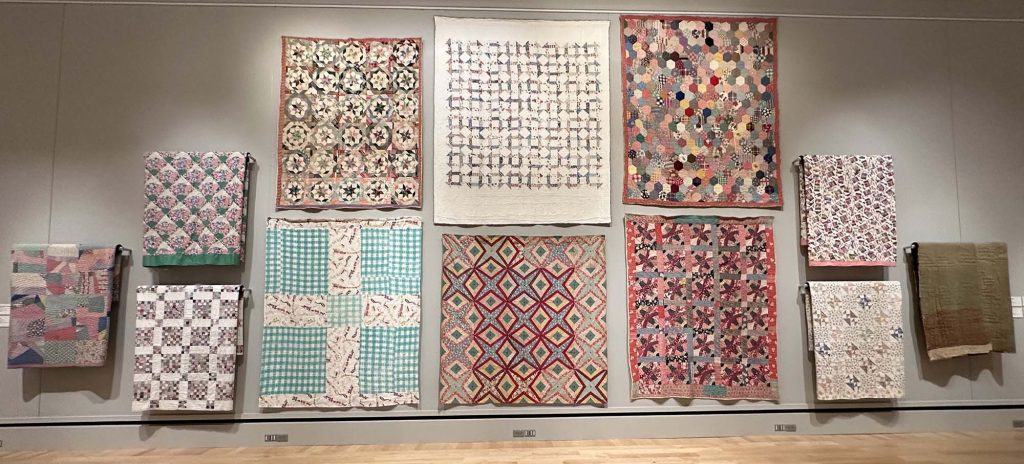
Star
One of my favorite quilts in the exhibit, Star, features controlled scrappy piecing in a repeated motif. The maker used a mix of feed sack patterns and relied primarily on value and warm vs. cool coloring to arrange a balanced and unified design.
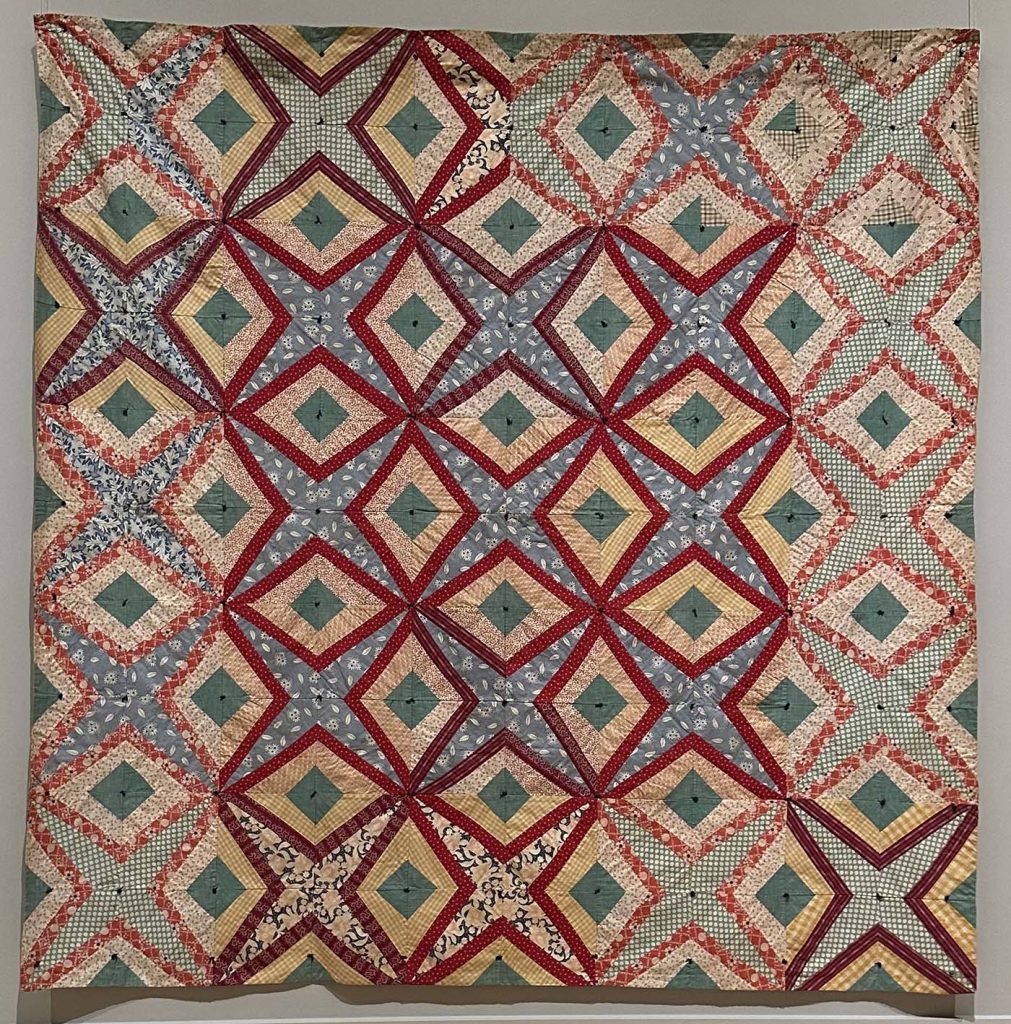
When you get close to the quilt, you can see the distinct prints that change from one section to the next.
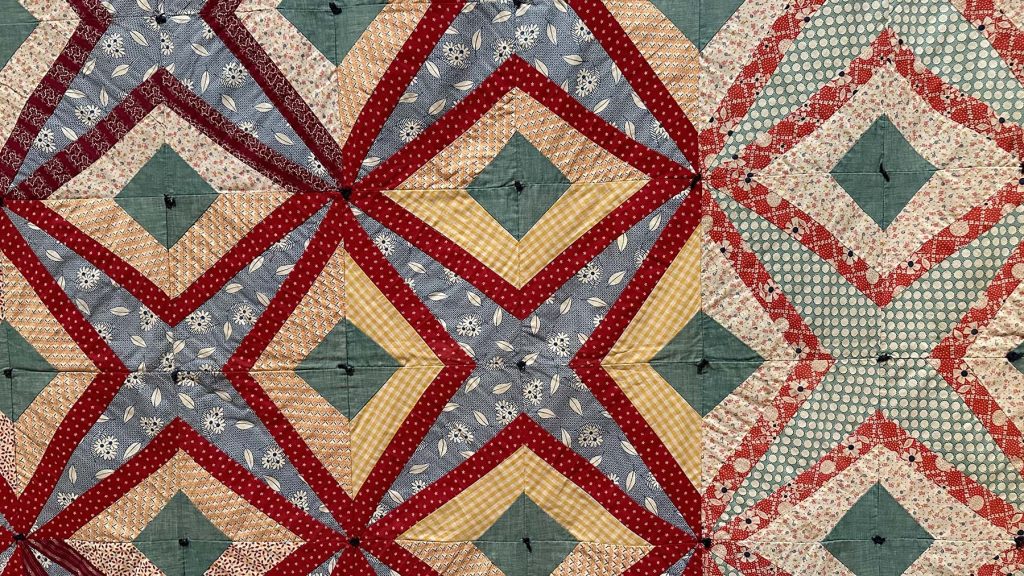
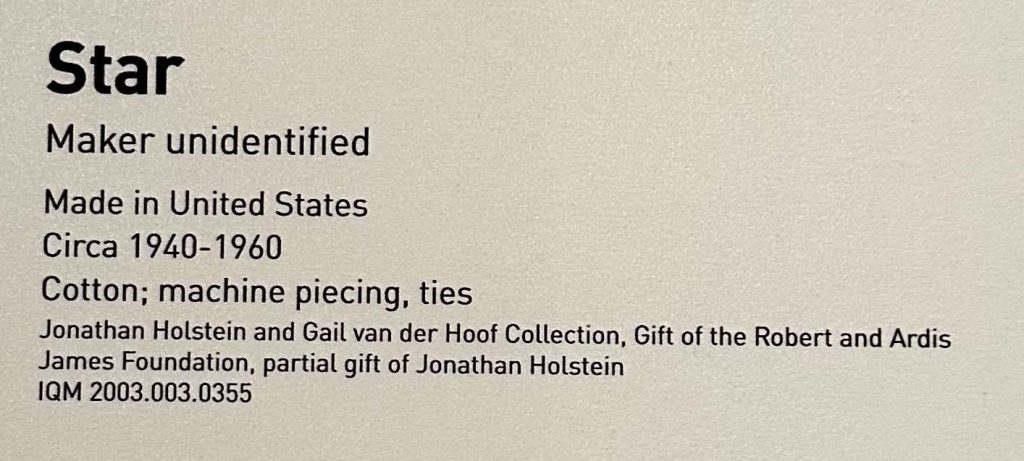
Cheater’s Cloth Quilt
Until recently, pre-printed panels were often called cheater’s cloth. (Now, we embrace all types of fabric designs and have moved away from this judgemental term.) Companies printed cheater’s cloth on feed sacks so the sewist could quickly and easily create a quilt top. This quilt is constructed using just four bags stitched together. I also suspect this was an excellent way for a company to guarantee their customer would purchase four bags of something!
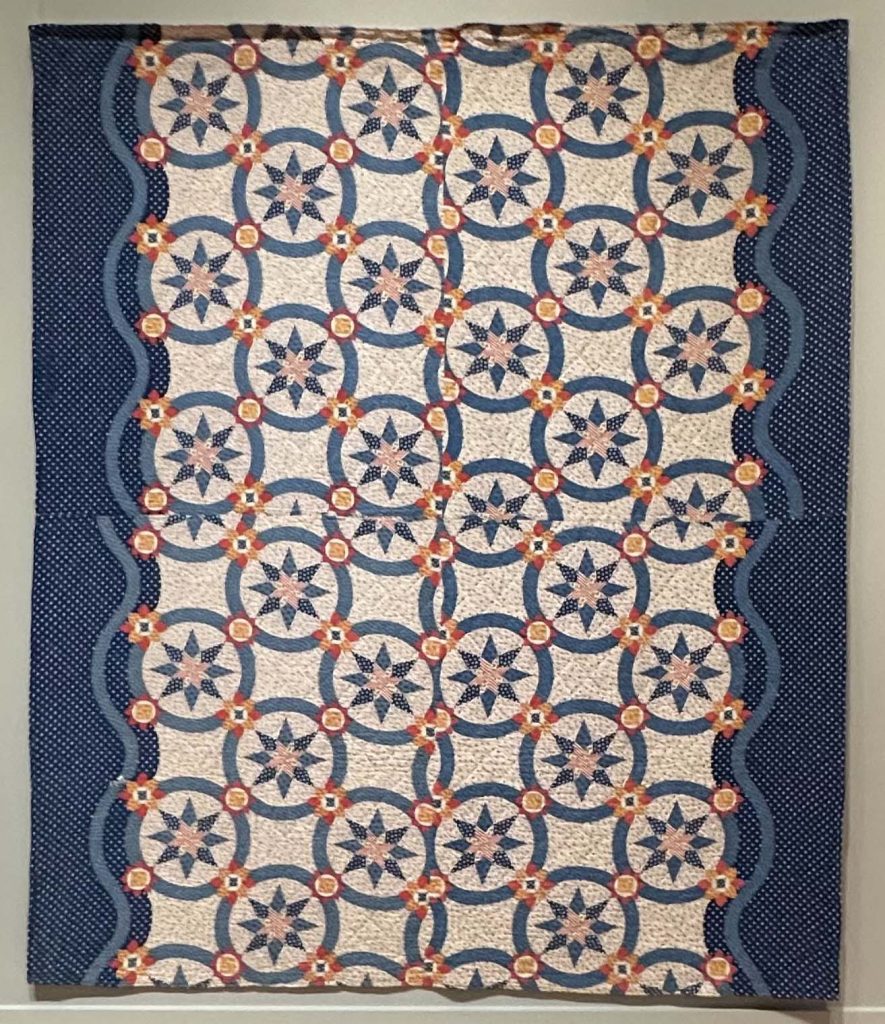
Below, you can see where the feed sacks join. The printed design even includes the quilt border!
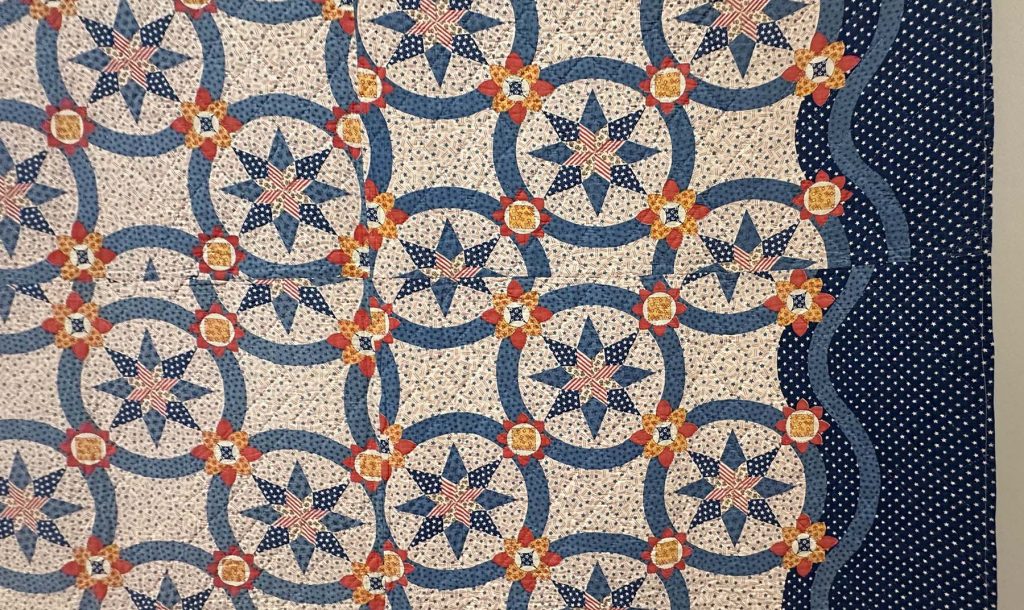
Axe Blade Quilt
This tiny quilt features a shape I’ve worked with this year- the apple core, also known as an axe blade. The finished quilt is doll-sized and features many scraps from various prints.
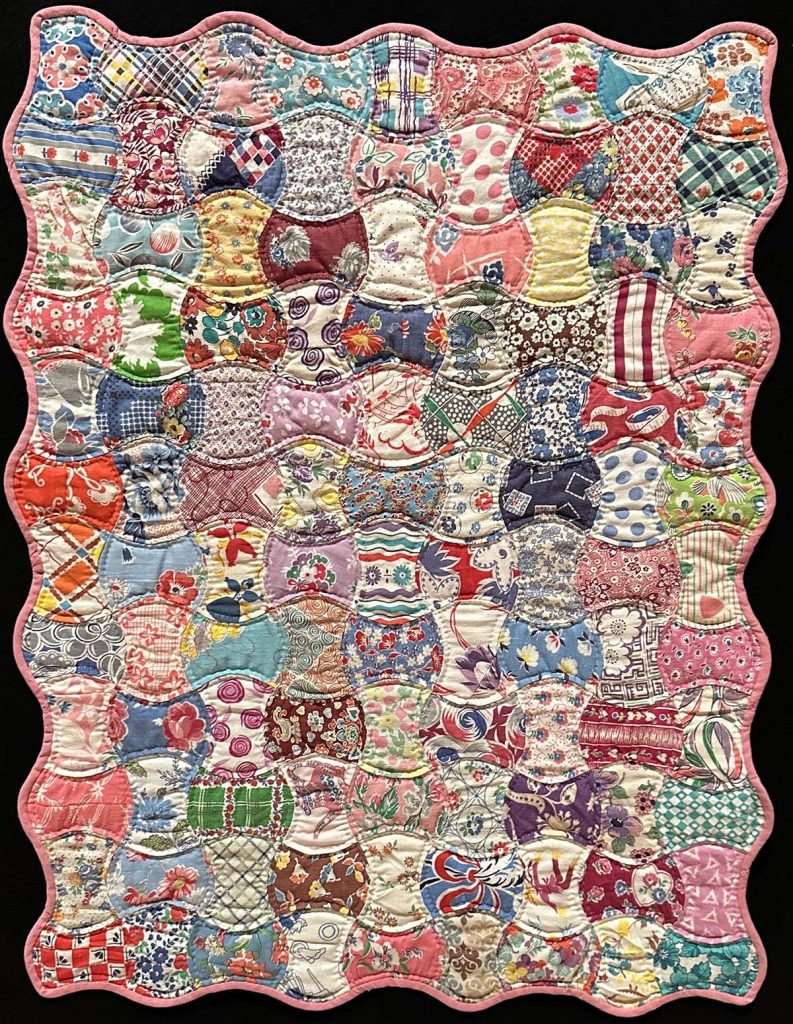
The skinny binding on this piece is exquisite!
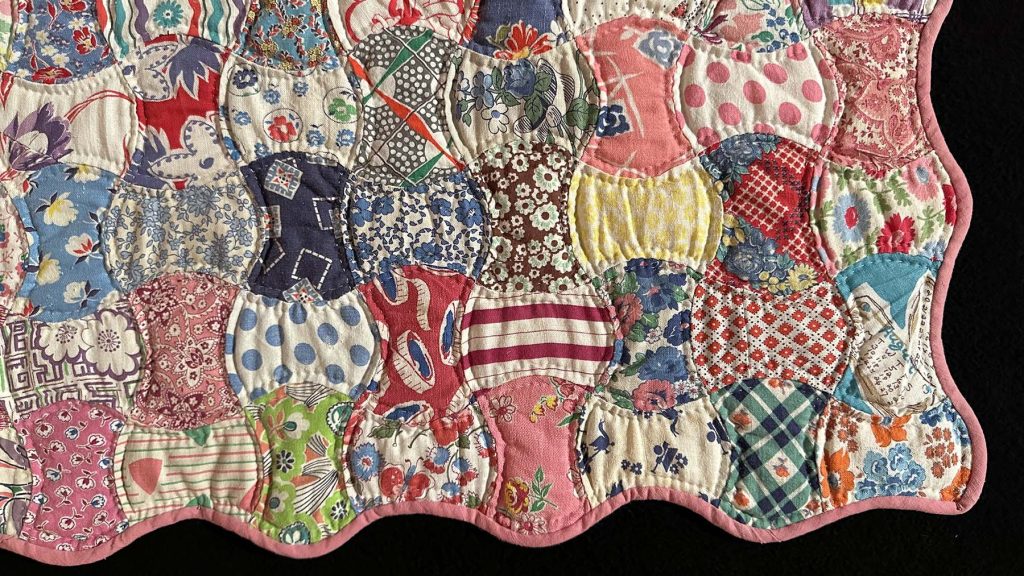
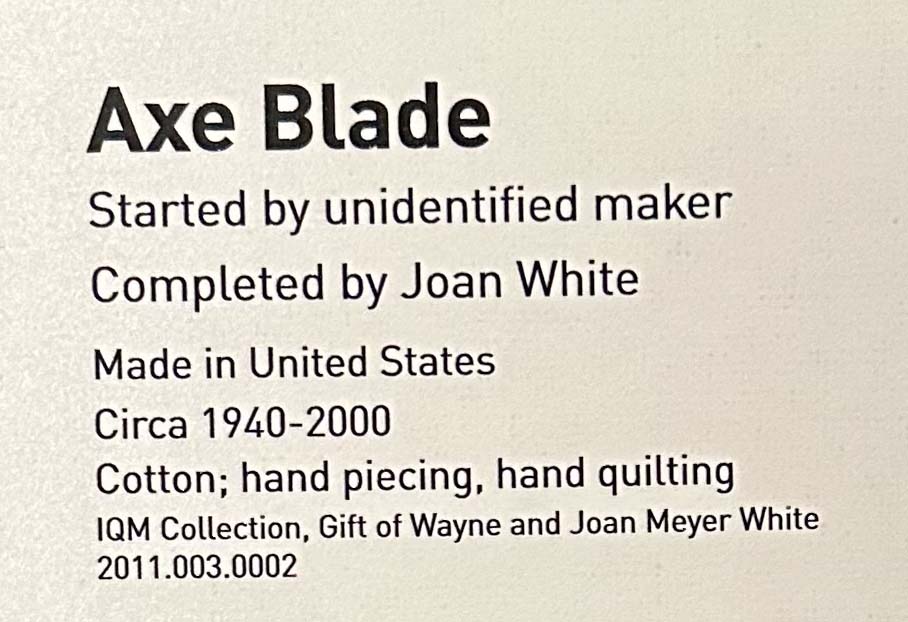
Feed Sack Clothing
Several articles of feed sack clothing, including pajamas, dresses, and an apron, were arranged throughout the exhibit, starting with this section. Sometimes, the museum included uncut examples of the bags used to create the garment next to the finished piece. Seeing how the material held up after wear and washing was fun.
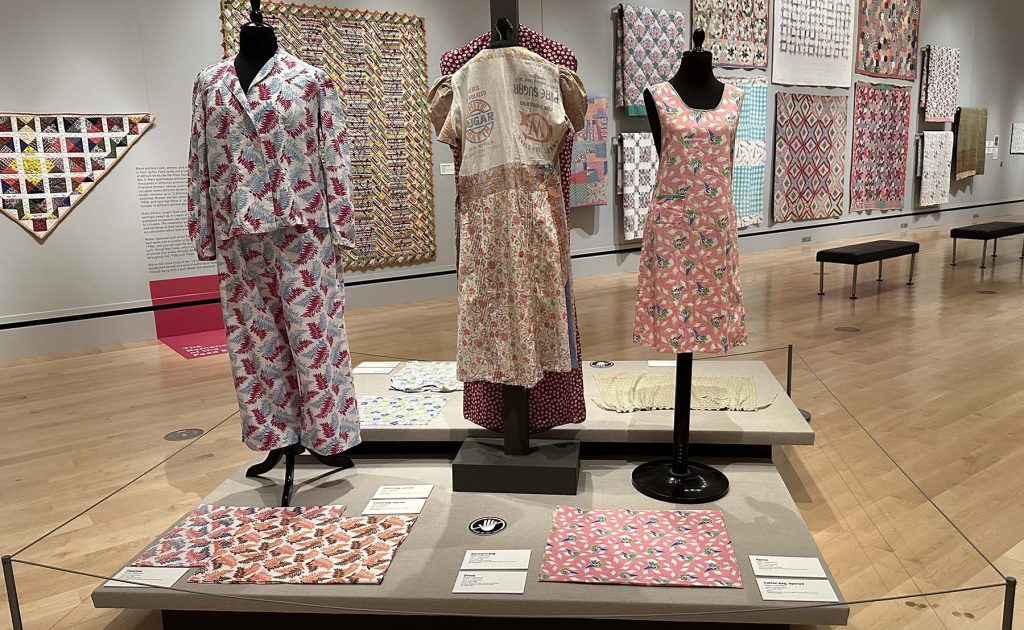
Dresses and children’s clothes were common and looked light and comfortable.
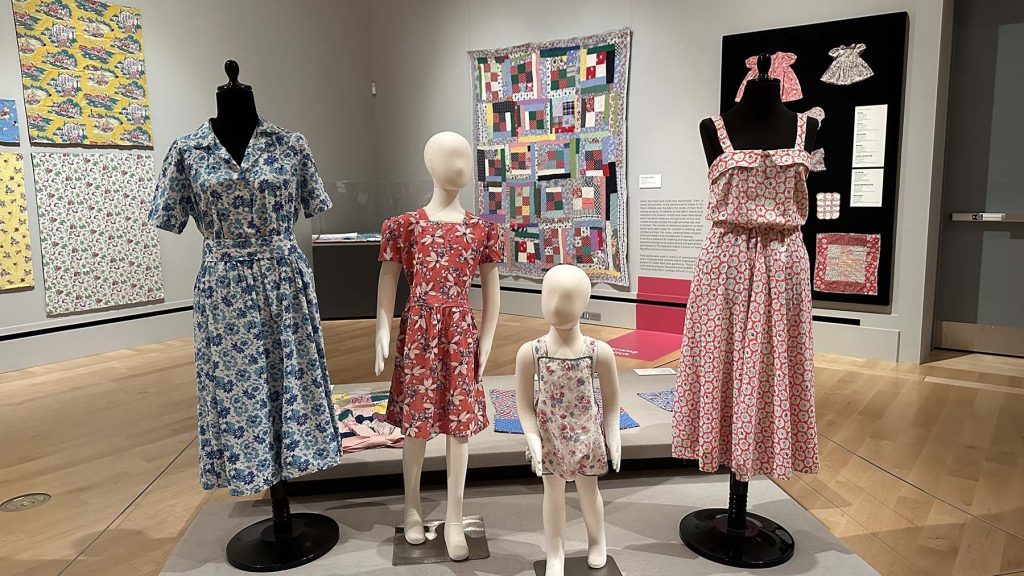
Learn More About the Exhibit
Unfortunately, the Feed Sack Exhibit has concluded, but you can learn more on the International Quilt Museum website by clicking the button below.
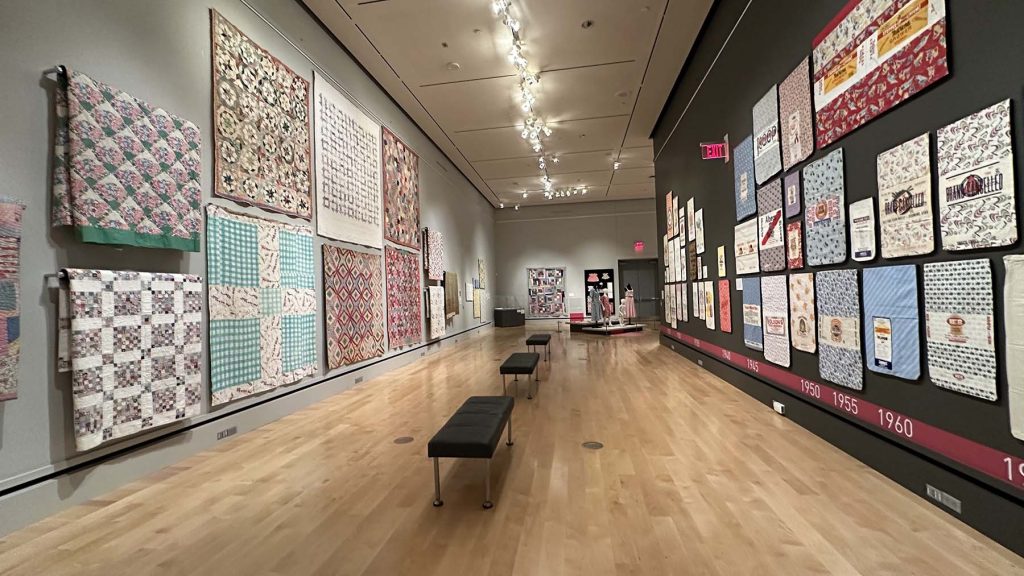

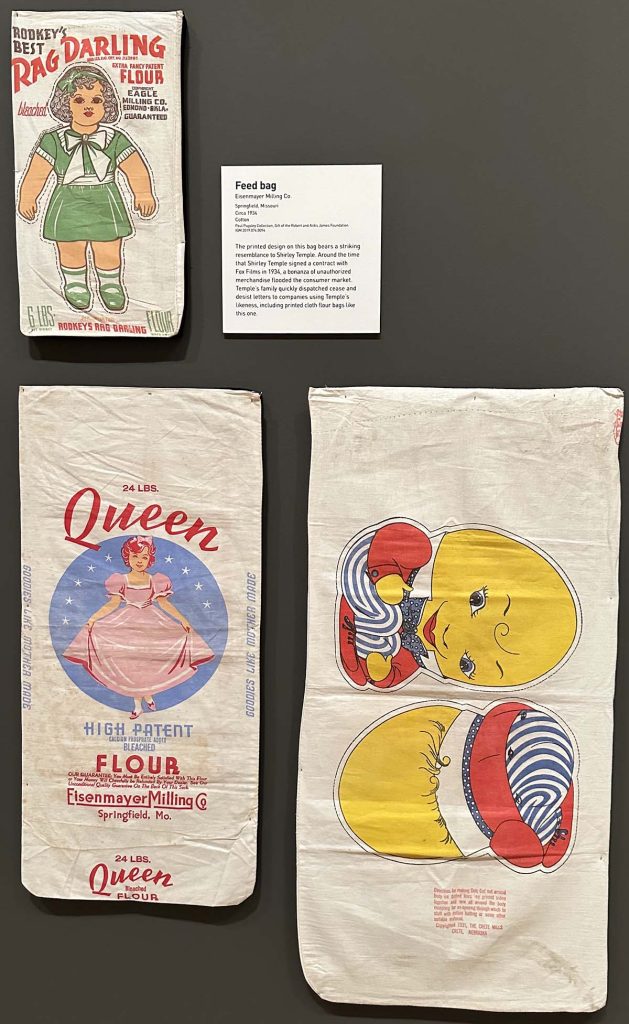

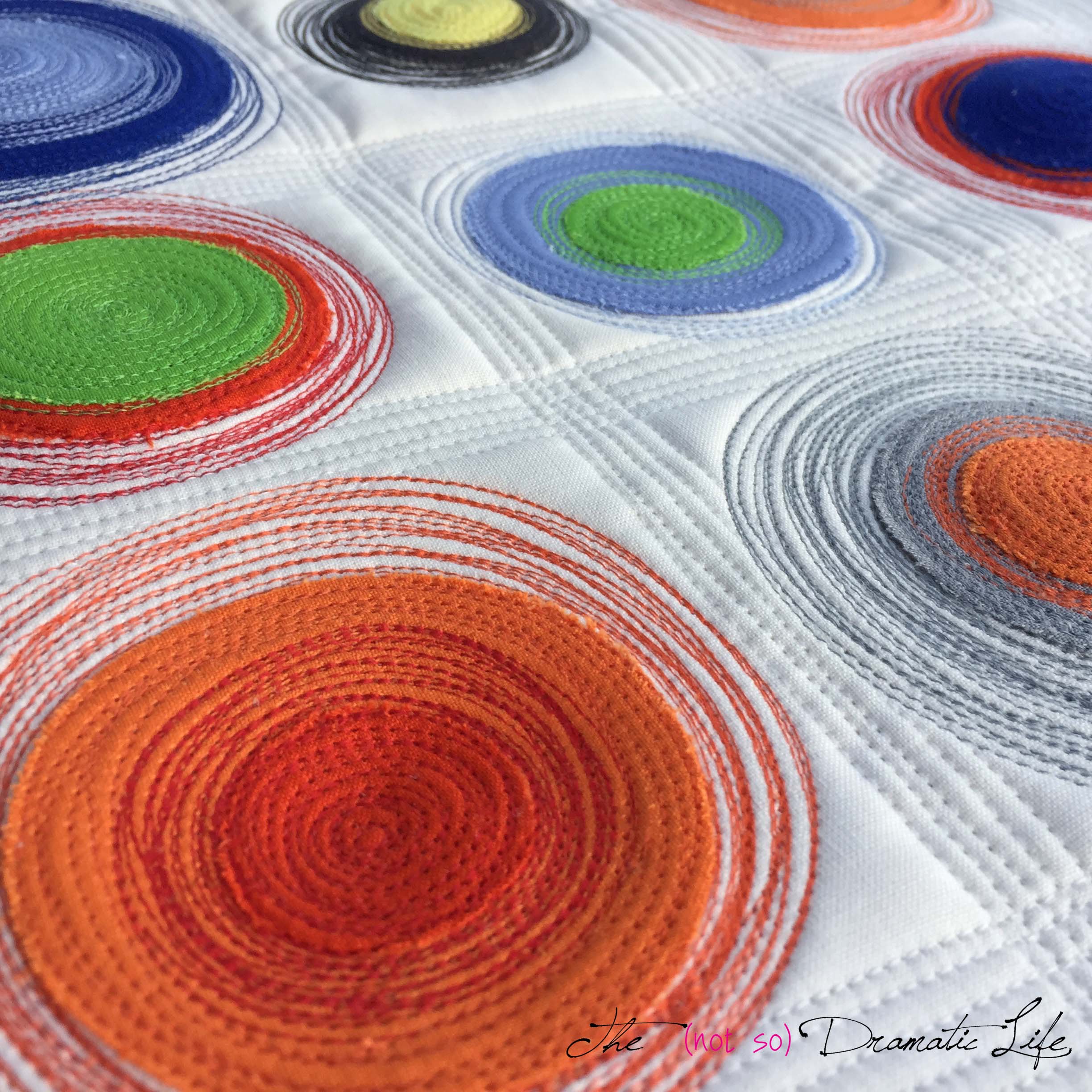
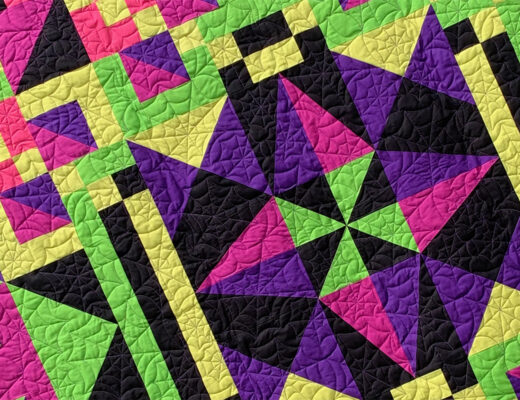
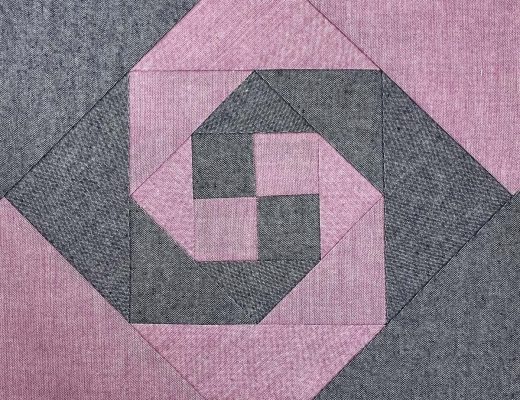

No Comments